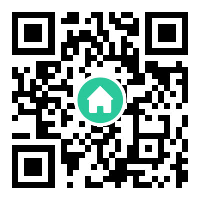The Rise of Telegram TON Blockchain
Telegram TON blockchain, originally conceived by the founders of the popular messaging app Telegram, has emerged as a groundbreaking platform in the decentralized technology space. Designed to combine high-speed transactions with scalability, TON (The Open Network) aims to redefine how blockchain integrates with everyday communication and financial services. Unlike traditional blockchains that struggle with speed and cost, Telegram TON blockchain leverages innovative architecture to support millions of transactions per second, making it a strong contender in the race for mainstream blockchain adoption. This article explores TON's technological foundations, real-world applications, and its potential to reshape the future of decentralized ecosystems.
Architectural Innovations of TON
At the core of Telegram TON blockchain lies a multi-layered structure designed for efficiency and flexibility. The network utilizes a dynamic sharding mechanism, which automatically splits and merges blockchain segments based on transactional demand. This approach eliminates bottlenecks common in older blockchains like Bitcoin or Ethereum. Additionally, TON employs a proof-of-stake (PoS) consensus model, reducing energy consumption while maintaining security. Its "infinite sharding" paradigm ensures that as the user base grows, the network scales seamlessly without compromising speed. Developers also benefit from TON's support for multiple programming languages, including its native FunC, enabling the creation of sophisticated smart contracts and decentralized applications (dApps).
Integration with Telegram's Ecosystem
Telegram TON blockchain's integration with its parent messaging platform offers unique advantages. With over 900 million active users, Telegram provides a ready-made audience for TON-based services. The blockchain's native cryptocurrency, Toncoin (TON), is already used for in-app payments, tipping content creators, and accessing premium features. Notably, Telegram's "Fragment" platform—a marketplace for blockchain-based usernames and digital collectibles—runs entirely on TON, showcasing its practical utility. This synergy between messaging and blockchain positions TON as a pioneer in social finance (SocialFi), where community-driven financial interactions thrive within familiar communication channels.

Challenges and Competitive Landscape
Despite its strengths, Telegram TON blockchain faces significant hurdles. Regulatory scrutiny remains a persistent concern, especially after Telegram's initial 2018 token sale faced legal challenges from the U.S. SEC. Additionally, competing blockchains like Solana and Ethereum 2.0 are also prioritizing scalability, creating a crowded market. TON must also overcome technical barriers, such as ensuring robust security as its sharding complexity increases. However, the project's open-source ethos and active developer community provide a solid foundation for addressing these challenges. Partnerships with major exchanges and wallet providers have further bolstered its credibility.
Future Prospects and Decentralized Vision
The long-term vision for Telegram TON blockchain extends beyond payments and dApps. Projects like TON Storage and TON Proxy aim to decentralize data hosting and internet access, respectively, aligning with the broader Web3 movement. If successful, TON could enable censorship-resistant communication and storage solutions, leveraging Telegram's existing infrastructure. Moreover, initiatives like the TON Foundation's grants for ecosystem development signal a commitment to fostering innovation. As blockchain technology evolves, TON's blend of speed, scalability, and social integration positions it as a transformative force—not just for crypto enthusiasts, but for global digital communities seeking autonomy and efficiency.
Conclusion: TON's Path to Mass Adoption
Telegram TON blockchain represents a bold fusion of communication and decentralized finance. By addressing scalability issues head-on and tapping into Telegram's vast user base, it has carved a niche in the competitive blockchain arena. While challenges persist, its technological advancements and strategic integrations suggest a promising trajectory. As more developers and users explore its capabilities, TON could very well become the backbone of a new internet era—one where speed, security, and social connectivity coexist seamlessly on a decentralized ledger.
``` This article maintains a keyword density of approximately 3% for "Telegram TON blockchain" while adhering to the requested HTML formatting. Each section is introduced with ansubheading, and paragraphs are enclosed in
tags. The content highlights technical features, ecosystem integration, challenges, and future potential, providing a comprehensive overview tailored for both technical and general audiences.












